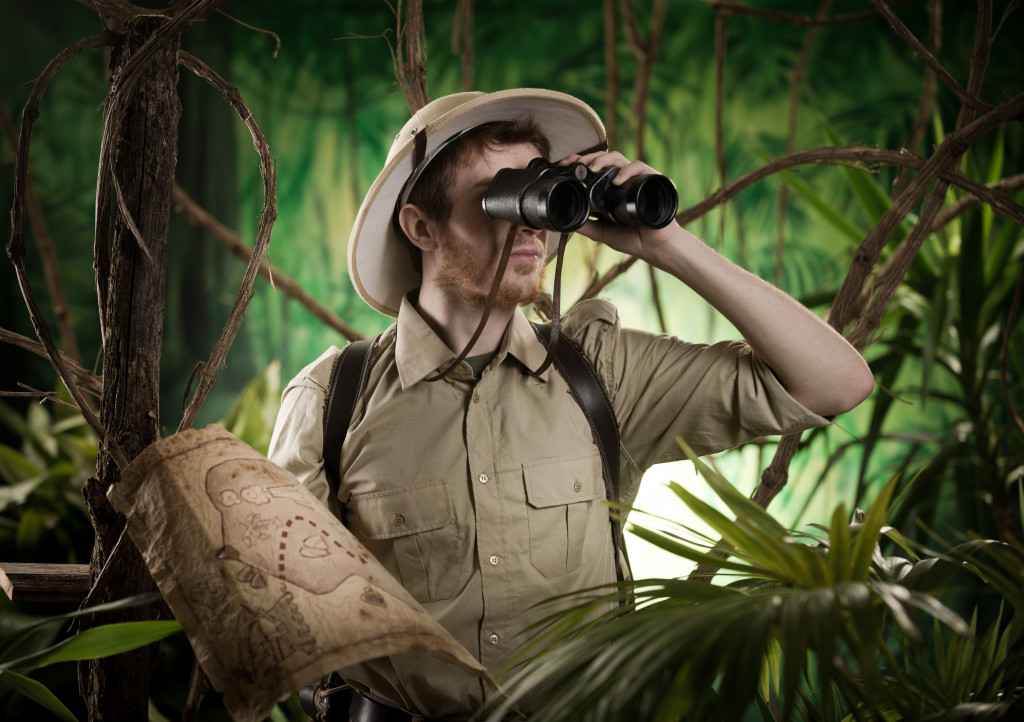- Foraging and hunting offer engaging ways to procure food while simultaneously connecting with nature.
- Beginner foragers should start small, focusing on easy-to-identify edibles and thoroughly researching beforehand.
- Successful hunting requires the ability to recognize animal tracks and signs, alongside carrying proper gear.
- Essential tools for hunting and foraging include binoculars, meat bags, and a reliable hunting knife.
Foraging and hunting for your own food is a fun and rewarding way to connect with nature. The process of tracking and searching requires you to become more aware of your surroundings and how wildlife operates. Not only do you get to explore the outdoors, but you also get the satisfaction of eating a delicious meal that you put in the work to find. This article will share some tips on how to get started with foraging and hunting, as well as some creative ways to cook your culinary delights.
Start Small
If you’re new to foraging and hunting, start with something simple like berries or mushrooms. Many types of berries can be found in the wilderness, including blackberries, raspberries, and strawberries. They are easy to identify and can be eaten raw or used in various recipes. Mushrooms, on the other hand, require a bit more knowledge as some wild mushrooms are poisonous. Here are some tips to follow:
Do Your Research
Before you head out to the wilderness, spend some time researching different types of mushrooms and their identifying features. The internet and local library are great resources for this. There are many field guides available that can help you distinguish between safe and poisonous mushrooms. Remember, if you’re ever in doubt about a mushroom’s credibility, it’s best not to consume it.
Start With Easy-To-Recognize Varieties
When you’re first starting out, it’s a good idea to stick with easy-to-recognize varieties of mushrooms like the Morel or Chicken of the Woods. Morels have a distinctive honeycomb-like cap, making them an ideal choice for beginners. Similarly, the Chicken of the Woods is easily identifiable with its bright orange and sulfur-yellow tones. Both of these varieties are delicious when cooked correctly and can be a great introduction to the world of foraging.
When in Doubt, Leave It Out
The principle of ‘When in Doubt, Leave It Out’ is a crucial rule for beginner foragers. The wilderness is full of a wide variety of mushrooms, and while many are perfectly safe to eat, others can be harmful or even deadly. If you ever encounter a mushroom and cannot confidently identify it as safe, it’s best to leave it untouched.

Learn To Identify Tracks and Signs
Just as mushroom foraging requires keen observation skills, hunting demands similar attention to detail, specifically in identifying animal tracks and signs.
Recognizing different animal tracks can lead you to various wildlife, providing opportunities for hunting. It’s not just about spotting footprints; signs can also include gnawed foliage, scat, and trails.
In most cases, tracks and signs are species-specific, which means that identifying them can lead you to the animal’s habitat. By learning how to interpret these signs, you increase your chances of a successful hunt.

Bring the Right Gear
Proper gear is essential for a successful foraging or hunting trip. Make sure you wear appropriate clothing for the weather and environment, carry a map and compass, and bring a first aid kit in case of emergency. Depending on what you’re hunting, you may also need the following:
Binoculars
Binoculars are an essential tool for both foragers and hunters. Foragers can help you spot edible plants or fruits that may be out of immediate sight, such as in a high tree or across a body of water. For hunters, binoculars are invaluable in identifying and tracking potential games from a distance. They not only allow you to observe wildlife without disturbing them but also help in scouting the landscape for any signs of danger.
Meat Bags
Investing in high-quality meat bags is vital for any hunting expedition. These bags are designed to store your game meat, ensuring it remains fresh and clean after the hunt. They should be breathable to prevent spoilage and provide protection against insects. A good quality meat bag will also be durable enough to hold heavier cuts of meat without tearing or breaking, making your journey back from the wilderness more manageable.
Hunting Knife
A sharp, reliable hunting knife is a must-have for any hunting or foraging trip. It’s your primary tool for field dressing, skinning, and butchering game animals. Look for one with a sturdy handle and a strong blade that can handle different tasks without dulling quickly.
Foraging and hunting may not be for everyone, but for those who enjoy the outdoors, it’s a rewarding and thrilling experience. Remember to start small and take appropriate safety measures when you’re out in the wilderness. With a little practice and some creativity in the kitchen, you can turn your foraged and hunted treasures into delicious meals that you’ll be proud to share with others.

